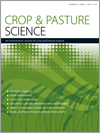CP17437Effects of long-term rotation and tillage practice on grain yield and protein of wheat and soil fertility on a Vertosol in a medium-rainfall temperate environment
Long term effects of continuous cropping systems on productivity in a medium rainfall temperate environment were assessed. There was no evidence that systems based on pulses, canola and reduced tillage are less able to maintain productivity, although they are less resilient to reduced rainfall compared to traditional fallow systems. All rotation/tillage systems other than those incorporating legume pastures however resulted in decreased soil C and N stocks.





